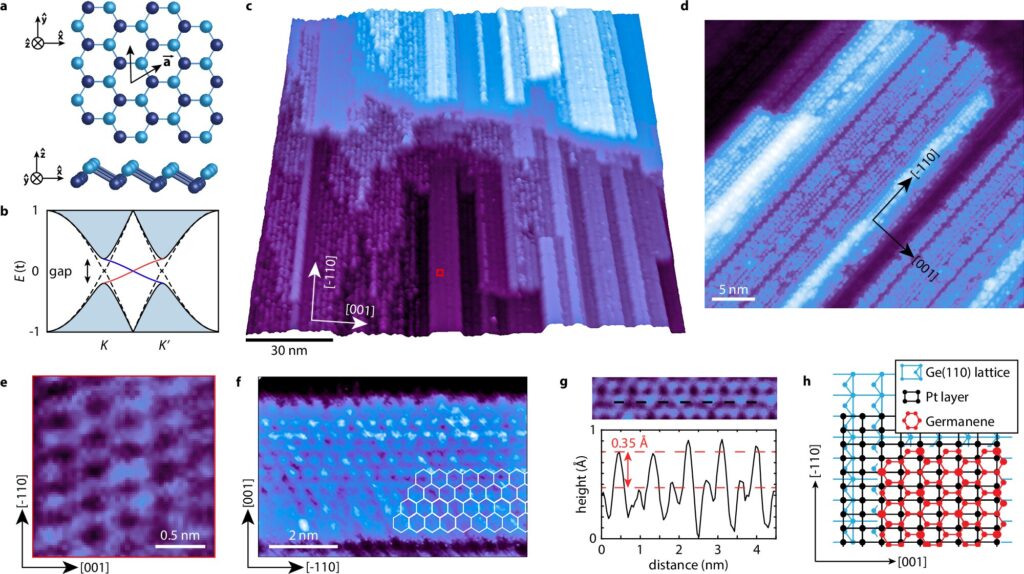If you start with a two-dimensional ribbon and make it narrower and narrower, when does it stop being a ribbon and start being a one-dimensional line? Scientists from Utrecht University and the University of Twente made one-atom-thick ultrathin nanoribbons consisting of germanium atoms.
They have shown that this system exhibits amazing properties that can be useful, for example, in quantum computing. Their work was recently published in Nature Communications.
Quantum systems have different properties depending on their dimensionality. Two-dimensional nanoribbons have different properties than one-dimensional quantum systems. Two-dimensional topological insulators are at the forefront of condensed-matter physics because of their unique electronic properties. They are insulating in their interior but have very conductive edges, where electricity flows without any resistance.
Can we go smaller?
Because of these properties, topological insulators are candidate materials for quantum computing and for the next generation of low-energy electronics. “But as we try to make devices smaller and more efficient, there are key questions that remained unanswered,” says Pantelis Bampoulis, one of the researchers.
“Like, what is the smallest size a topological material retains its two-dimensional properties? And what happens when we go smaller?” Bampoulis continues. The researchers addressed these questions in their latest research using nanoribbons made from germanene. Germanene is an atomically thin layer of germanium atoms with unique topological properties.
Germanene nanoribbons
“In our work, we made germanene nanoribbons. These are structures that are just a few nanometers wide but hundreds of nanometers long. With germanene nanoribbons, we studied both theoretically and experimentally how the topological edge states change as the ribbons get narrower and narrower,” explains Dennis Klaassen, Ph.D. student supervised by Bampoulis and first author of the study.
The researchers found that the nanoribbons maintain their topological edge states down to a critical width of about two nanometers. Below this width, something remarkable happens. The edge states you normally find in germanene nanoribbons disappeared, and instead, new quantum states localized at the ends of the nanoribbons appeared. These end states are protected by fundamental symmetries and indicate the emergence of a one-dimensional topological insulator.
Possible quantum applications
The end states are very stable against defects and other local impurities. This makes them perfect for use in quantum applications, for example, in the development of error-resistant qubits.
“Interestingly, these states are similar to Majorana zero modes, which are elusive particles that have fascinated scientists ever since their prediction. Although we do not address Majorana zero modes, our study provides a template for exploring such phenomena in a one-dimensional material with strong spin-orbit coupling,” says Bampoulis.
“On top of that, the fabrication procedure allows us to make dense arrays of topological edge states where current could flow without dissipation, fulfilling a major requirement for low-energy electronics,” says Klaassen.


